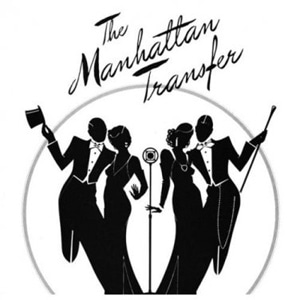
Tracks
Tuxedo Junction Julian Dash / Buddy Feyne / Erskine Hawkins / William Johnson |
3:05 |
Sweet Talking Guy Barbara J. Baer / Eliot Greenberg / Doug Morris / Robert Schwartz |
2:28 |
Operator William Spivery / William Spivey |
3:13 |
Candy Mack David / Alex Kramer / Joan Whitney |
3:30 |
Gloria Adam R. Levy / Esther Navarro |
3:00 |
Clap Your Hands Ira Newborn |
2:57 |
That Cat Is High J. M. Williams |
2:53 |
You Can Depend on Me Earl Hines, Charles Carpenter |
3:30 |
Blue Champagne Frank Ryerson, Grady Watts, Jimmy Eaton |
2:21 |
Java Jive Milton Drake, Ben Oakland |
2:44 |
Occapella Allen Toussaint |
3:04 |
Heart's Desire Hugh X. Lewis, George Cox, James Dozier, Ralph Ingram, Bernard Purdie |
2:36 |
The Manhattan Transfer
This self-titled album is the first of four albums recorded by the second incarnation of The Manhattan Transfer: Tim Hauser, Janis Siegel, Alan Paul and Laurel Massé. The album was released on April 2, 1975 and debuted on Billboard’s Top Pop Album charts on May 3, 1975 and eventually went to #33, based partially on the strength of the single “Operator” which went to #22 on Billboard’s Hot 100 Chart.
It was once written that Janis’ voice on “Operator” was “capable of leaping from a tender roar to the spirit lashing, hard edged weapon of salvation it becomes in the rocking gospel song.” The album was received well abroad, as “Tuxedo Junction:” went to #24 on the British pop charts. Clearly, the debut album showed the listening public this was a group with talent. Their four-part vocals stood out in a music culture that at the time wasn’t accustomed to anything more than simple harmonies.
The group had been together for three years before their debut album was released. In late 1974, they started to perform at “important” places, such as Reno Sweeney’s in New York. Before that, they had played mostly small clubs and had been popular in the New York underground. The Reno Sweeney engagement was an important one. Ahmet Ertegun, founder and chairman of Atlantic records, came to see them perform and loved them. He almost signed them on the spot. He did offer them a record contract, and they accepted.
When news got out the group was going to record an album, many critics wondered if a group that was so dynamic and visual in live club performances could translate that energy onto an album. They did. The release, produced by Ahmet Ertegun and Tim Hauser, was an extraordinarily produced showcase for the vocal talents of the foursome. Shaun Considine reviewed the album in May 1975 for The New York Times: “Vocally, The Manhattan Transfer is one of the slickest group’s on today’s market. Their intro number, ‘Tuxedo Junction,’ is a precise recreation of the 1940 Glenn Miller oldie, with the group’s four part vocal harmonies and jazz riffs supplanting the Miller instrumentals. They have done their homework; they have studied their old 78s in detail. In the honors section, ‘Blue Champagne,’ a Dorsey beauty, and ‘Candy’ evoke all of the magic and hazy charm of the 30s and 40s.”
The press did have the tendency to label the group as a nostalgia act, when first reviewing the album, because their material came from the past. In August 1975, Tim emphasized that they weren’t a nostalgia group. “Our future is not entirely in the past. There’s no reason we can’t have new material so long as it fits our kind of singing – the four part harmony, the choreography, the whole gestalt. Going back, going ahead, we’ve got all kinds of ways to go.” And they have done just that.